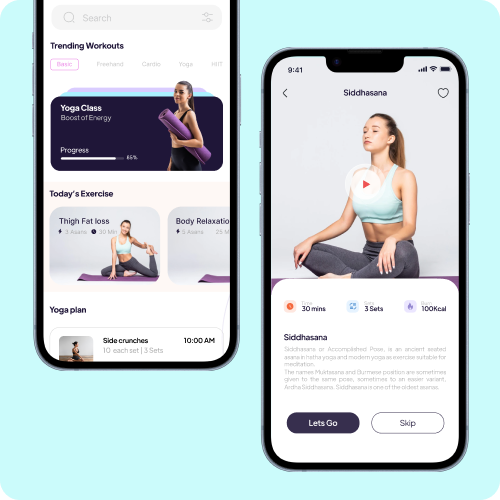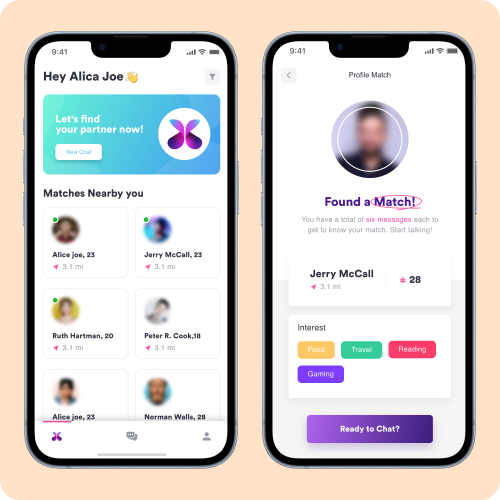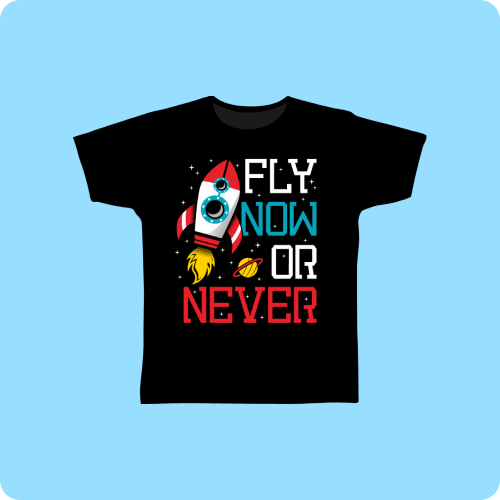Clubhouse. Another channel to count under social media addiction (yeah, it’s a real thing). Anyway, Clubhouse grew its user base from 600,000 in December 2020 to 2M users in January 2021. There is no better example of ‘explosive’ growth. So, how to create an app like Clubhouse?
FREE Bonus Material: Build Your Own Clubhouse – A 31-Point Checklist
Clubhouse raised its Series A funding of $10M in May 2020, and in less than a year, raised a Series B funding of $100M, rendering the company’s valuation to $1B! Everyone is in awe, running around as a ‘brand ambassador’ of the platform. Elon Musk apparently is one of them.
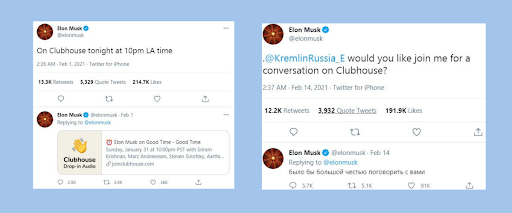
He appeared on the platform on 1st February 2021 which was covered by almost every popular media outlet there is (Elon Musk, duh!). This gave Clubhouse another major break, pushing its user base to 8.1M users.
So, how did Clubhouse go from being ‘just another startup’ that received $10M seed funding in May 2020 to being one of the most used social media platforms right now?
In this article, I am going to break down the business & technical side of creating an app like Clubhouse. While preparing this guide, I have also created a detailed 31-point checklist to help you create an app like Clubhouse and launch it successfully. Grab it now!
Build Your Own Clubhouse: A 31-Point Checklist
Remember how and when the YouTube Shorts and Instagram Reels were launched? YouTube and Instagram (even Facebook) followed the success of short-format videos on TikTok and this worked for them. There were a few notable things that happened, following the success of Clubhouse as well.
Launch of Clubhouse-like Features by Slack, Facebook, Twitter & Telegram – A Coincidence?
I mentioned earlier how rapidly Clubhouse’s user base grew. If you are looking for other signs to create an app like Clubhouse, social media companies like Telegram, Twitter, and Facebook have included or announced to include Clubhouse app-like features to their platforms.
Here’s how these platforms are trying to leverage Clubhouse’s popularity to their advantage.
Among other platforms, Twitter is trying hard to bring different audio features like the Clubhouse App.
Clubhouse was officially launched in March 2020 on iOS devices. A product update titled – Your Tweet, Your Voice went live on Twitter’s blog on 17th June 2020. The new feature allows you to tweet using your voice.
On December 8, 2020, Twitter introduced Twitter Spaces – live audio conversations on Twitter. A blog (Spaces is here, let’s chat) announcing the launch of Twitter Spaces went live on 3 May 2021.
The user interface almost exactly matches Clubhouse’s interface. It’s like Twitter is not even trying to hide the fact that they launched this product to compete directly with the Clubhouse app.
Telegram Chats
Telegram also is right there among platforms trying to use Clubhouse’s popularity to their benefit. In December 2020, Telegram introduced Voice Chats, which allows admins to host voice chat sessions in groups, officially launched in March 2021.
In case you didn’t know, Telegram groups can accommodate a few thousand users. Besides, admins can define the access levels of people who can speak, who can hear, etc.
Telegram Chats are not as seamless as one would want them to be, but it follows the momentum Clubhouse has spurred.
Slack Huddles
Slack – the fastest-growing enterprise software introduced a new feature recently – Slack Huddles in July 2021. At the time of writing this guide, Slack Huddles was just launched for premium members. The company plans to soon launch the feature for the users for the free version as well.
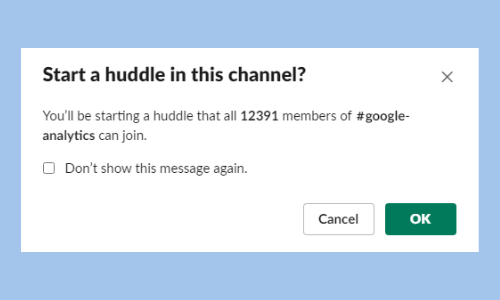
As the company puts it, Slack Huddles is a way to start “informal discussions that you usually have in the office right in Slack.” It’s no rocket science if one would want to connect the dots between the launch of the Clubhouse app, its rise to fame, and the launch of “live audio discussions” by Slack.
Facebook Podcasts
Facebook introduced a new feature – Facebook Podcasts in April 2021. Other than that, Facebook is also working on Live Audio Rooms on Messenger.
The users have voiced their opinions by making Clubhouse popular & successful enough for other social media platforms to follow in its footsteps.
How to Create An App Like Clubhouse – The Business Side
But what did Clubhouse do to compound its growth, as it did? Was it just coincidental growth because of a great product or was it planned and systematically executed through what Chet Holmes calls “pigheaded discipline and determination” in his book The Ultimate Sales Machine?
The Invite-Only Conundrum of Clubhouse
Clubhouse started as an “invite-only” social media platform. But why would a business want to limit users to its platform, especially when it just launched (in its beta phase)? And, more importantly, is Clubhouse the first-ever platform to try the “invite-only” strategy?
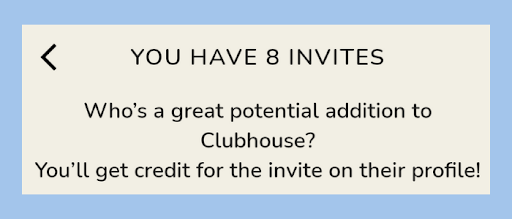
Clubhouse strategically leveraged the decades-old Fear Of Missing Out (FOMO), which has been consistently reinforced by social media platforms through push notifications, AI, and modern tech to increase the average session time of users.
Besides, the “invitation-only” strategy ensures to establish trust among their newly joined users as well.
As soon as it got traction and celebrity entrepreneurs like Elon Musk started hosting ‘chat rooms’ on Clubhouse, every social media platform out there started getting posts of people either curious about Clubhouse, asking to be invited to Clubhouse, or inviting their users to join their Clubhouse rooms.
Now, is Clubhouse the first-ever social media platform to try the exclusivity of the “invite-only” growth strategy?
The short answer is – No.
A Small World
A Small World – a social network connecting ‘trusted’ travelers from around the world. Here is a snippet of the company’s website from Wayback Machine – Internet Archive.
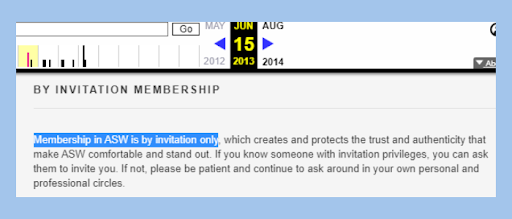
ASW started as an invite-only social networking platform but its growth plummeted as soon as it opened to the public. As of July 21, 2021, Clubhouse too is open to everyone.
Ello
Ello – a social networking platform for artists worldwide- was not just for artists when it launched. This is what it looked like back in March 2014.
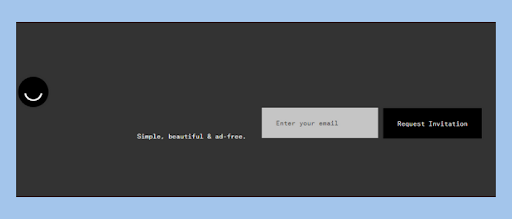
It launched as an invite-only social media platform to tackle ads’ atrocities, information tracking deployed by other social media sites like Facebook. Here is what their Manifesto read.
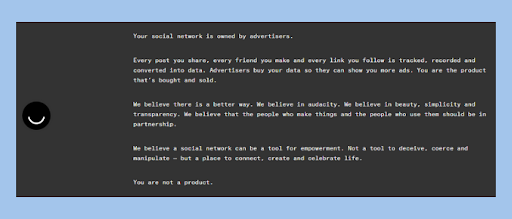
Invite-Only: The Flip Side
If properly executed, an invitational-only growth strategy can be explosive for a platform’s growth, but the question must be posed about whether this is scalable?
As for the Clubhouse, this has worked perfectly so far with reportedly millions on the waitlist post their launch for Android devices. I talk about the ‘why’ in the next section.
I am sure most C-suite exes would prefer a consistently growing user base for their mobile app or any digital product against a quick growth and even quicker decline in the onboarding of new users after a couple of years or even months.
The Resourcifi Angle
I think the two examples (Ello & ASW) are sufficient to say that “invite-only” in itself isn’t enough for a social media platform or any other digital product to go viral.
The sustainability of any and every business depends on how good its offering is – digital or otherwise.
For instance, Clubhouse has already raised controversies over its lack of content moderation to avoid harassment of the historically marginalized communities.
This problem has been quite frequent, especially among social media platforms. Pinterest also faced a similar challenge, following the launch of “tried it” pins.
I reckon Clubhouse will soon take drastic measures to address this but isn’t “decentralization” a cool thing now?
Other than this, Clubhouse also has a different problem – lack of solid monetization, but we will talk about that in a minute.
If you are wondering how to make an app like Clubhouse, we recommend that you make plans to bank on more than just “invite-only” for your product’s growth.
Attracting Influencers
When not executed properly, the “invite-only” strategy will not work. Here is a basic representation of what random users invited by other random users would mean.
What Clubhouse did right was attract celebrity entrepreneurs early on. Right from Elon Musk, Drake, Kevin Hart, Naval Ravikant, and many other influencers, have hosted ‘rooms’ or participated in one of them.
Just the ones mentioned above have a combined following of over 100 million and that’s why successful influencer marketing will play a key role in making the invite-only strategy work for your mobile app.
Build Your Own Clubhouse: A 31-Point Checklist
Potential Revenue Models for An App Like Clubhouse
Now, one of the big red flags that I see with Clubhouse is a lack of solid monetization strategy.
Remember how I mentioned that Clubhouse is currently worth $100M but that’s just confusing for me because Clubhouse doesn’t show ads or has any other ways to make money yet.
Based on just that, one can only assume that the worth of Clubhouse is solely based on its huge user base and its growing popularity that they hope to capitalize on soon!
But before we delve into details of potential revenue models for an app like Clubhouse, let’s quickly look at the monetization models of popular social media platforms:
- Facebook & Instagram – Ads
- Twitter – Advertising & Data Licensing
- TikTok – Advertisement
Now I am not claiming that the revenue models mentioned above are the ONLY way these platforms make money. These giants have a huge database of users and deep insights into their users’ browsing habits.
But one common thing is their Ad Revenue Model. In fact, Facebook generated 98% of its revenue from serving ads. I am not saying that revenue through ads is not great, but users have become more and more conscious of their online privacy.
A classic example of this is the launch of digital products like Brave Browser. And I think Clubhouse users, including me, appreciate that Clubhouse didn’t follow in the footsteps of other social media giants.
Besides, since the content on Clubhouse is LIVE, adding ads would be more difficult and intrusive for its users.
Here are a few potential revenue models for an app like Clubhouse.
Creator Payments
As soon as Clubhouse received its Series B Funding, it announced that it will soon be launching different channels for paying its creators. This is definitely a step towards monetization of Clubhouse.
For instance, YouTube has Super Chat, Membership options, etc. for its creators. And it takes 30% of the Super Chat amounts and 45% of the video advertisement revenue.
But again, is this enough to support a huge upsurge in the user base of Clubhouse?
Premium Memberships
Clubhouse saw its first major influx of users after celebrity entrepreneurs and influencers started hosting rooms on the platform. Influencers have a lot of potentials to bring in users to the platform.
Clubhouse could partner with such influencers and create tier-based memberships depending on the number of users they can bring. Another option would be to go hardcore on content moderation and make it premium.
Clubhouse plans on supporting its creators from planning content & designing to providing monthly stipends. So, if I had to guess, Clubhouse premium memberships are on their way.
Peer-to-Peer Revenue Model
This could be another revenue model that can be used in a Clubhouse-like mobile app. Since the platform is already crawling with influencers, Clubhouse could create a way to pair businesses with relevant influencers from their industries.
The revenue generated from this revenue model could be how platforms like Fiverr and Upwork make money. Clubhouse mentioned in one of its blogs that it will work on matching creators with brands and I am looking forward to how it does that.
But keep in mind that choosing just one of these revenue models wouldn’t be feasible for an app like Clubhouse in the long run if you consider Ads to be off the table. Clubbing two or more revenue streams without impacting the platform’s UX should be prioritized.
Pitfalls to Avoid – Is There Room for Another Clubhouse?
Clubhouse witnessed growth in user base like no other social media platform has seen before in its first couple of months. Having said that, it still isn’t perfect!
Clubhouse has tapped into the social audio market and the improvisation opportunities are immense. You can learn from the pitfalls of the Clubhouse app and launch your social audio platform.
Here are a few pitfalls I have noticed so far with the Clubhouse app and the business model in general.
Monetization Strategy
Clubhouse recently moved out of its beta, after almost a year of its initial launch. Even though Clubhouse has (indirectly) announced its plan to monetize the platform, the ‘live’ nature of the platform limits its ability to capitalize on its huge user base.
For instance, Podcasts are recorded, edited, and presented as their best possible version.
If a podcast is long enough [45 mins or above], there are plenty of spots where a host can talk about sponsors of that episode without significantly interrupting the listeners’ experience.
Things completely change with Clubhouse. In multiple rooms, I see speakers inviting the listeners to follow them on Instagram, TikTok, and, of course, Clubhouse.
Take ASW or Ello (the invite-only social media platforms I talked about earlier) for example. These platforms unsuccessfully pivoted quite a few times in their efforts to monetize and bring in more users.
This is a mistake that should be avoided at all costs with your Clubhouse-like app.
Content Moderation
I talked about this at length in the above sections. Content Moderation will become a serious concern in a social audio app like Clubhouse. Why?
- The conversations in rooms are LIVE. This means they cannot be revisited to spot any ‘problematic’ elements unless an attendee reports it.
- Blocking users & dealing with problematic live rooms in real-time is going to take stronger commitment from the company as well as the technical team behind the app.
Clubhouse states that if no user reports a conversation when the room is live, it discards the recorded conversation as soon as the room is ended by the host.
Clubhouse, as mentioned earlier, is already facing the heat due to a lack of proactive content moderation on the platform. This can definitely be utilized when creating a Clubhouse-like app.
For instance, growing concerns of privacy on Chrome led to the invention of DuckDuckGo and Brave Browser.
Interest Matching Algorithm
Another pitfall that I have noticed with Clubhouse is its Interest Matching Algorithm. As compared to other social media platforms, there is a visible gap on the platform between users & potential rooms/users they would be interested in.
Another concerning thing that I would like to point out here is the excessive use of push notifications by Clubhouse. It sends more than 20 notifications in a day, mostly unrelated to the rooms you have joined and users you have followed.
This can be quite overwhelming, especially for someone who has just signed up on the platform.
Having said that, there is a visible market void when it comes to connecting users to audio content. Clubhouse has already proved the power of social audio platforms and things are only going uphill from here.
Better Onboarding
An effective onboarding experience increases the app user retention by a whopping 50%. Clubhouse can do better than its current onboarding process.
For instance, two things that Clubhouse asks as soon as a user joins.
Action #1: In the beta phase, Clubhouse asked users to follow 25 users. This could be random but here’s a potential explanation for this.
After studying its users, Facebook found out that if a new user makes 7 friends in 10 days, they are more likely to stay on the platform. I guess the Clubhouse has figured out its magic number to be “25”. (Source)
Action #2: Inviting users (in the joiner’s contact list) who are not on the app.

Clubhouse is doing a very great job at user onboarding and how software like Slack uses the experience to show users around the platform. These are the common pitfalls I’ve seen with the app that can be avoided to further support the growth of a Clubhouse-like platform.
Build Your Own Clubhouse: A 31-Point Checklist
How to Create An App Like Clubhouse – The Technical Side
In this section on how to create an app like Clubhouse, we’ll dive deeper into the tech behind the platform. If we take about specifics, we will look at these 3 factors
- Must-Have Features of An App Like Clubhouse
- Tech Stack of An App Like Clubhouse
- How much does it cost to build an app like Clubhouse?
Must-Have Features of An App Like Clubhouse
Since Clubhouse is the first social audio platform, live audio rooms are something that remains an integral part of an app like Clubhouse. Other than that, few features can be clubbed to create a potential USP.
Here are a few of them.
User Profiles & Settings
User Profiles are obviously an important feature of any social media platform. As of now, the “following” feature of Clubhouse user profiles shows users and pages alike.
This can be segregated into two different categories for a better experience. The “Settings” section allows users to reevaluate their interests, turn on/off notifications, know about the latest features, etc.
Search & Explore
Almost every social media platform has an “Explore” section for various reasons – increase in-app engagement, improve average session time, and, of course, give their users more content to consume.
From a pure UI standpoint, the current search option of Clubhouse is camouflaged among other options on its home screen.
The Search & Explore features can be clubbed in an app like Clubhouse. The current explore section of Clubhouse is shown on the main screen, along with rooms/users you follow.
Room Recordings
You should add this feature to your social audio app like Clubhouse.
Here’s the thing. Stories and other fleeting formats of media work because they are short (read, instantly consumable). This works perfectly because they are available for a short period.
The closest content format to these live audio Clubhouse rooms are podcasts, and consumers love to hear them at their own pace.
The recording feature in your app like Clubhouse won’t only allow late joiners to catch up on the conversation happening in the room but also allows creators to monetize it even when they are not live.
Text Chats
Clubhouse recently introduced a new feature called – The Backchannel. Using this feature, Clubhouse app users can set up private chats or group chats.
Tech Behind An App Like Clubhouse
Clubhouse is not very public about its tech stack but, in this section, we’ll have a look at a few technologies that were uncovered while tracking API calls the app made for its functioning.
Agora
Several sources have confirmed that Agora powers real-time conversations of Clubhouse. Neither Clubhouse nor Agora has officially confirmed or denied this. Here’s a quick brief about Agora.
Agora is a China & US-based startup that is responsible for the “real-time” audio conversation on the social audio platform. On a similar note, the startup is bound by the cybersecurity laws of the People’s Republic of China (PRC).
The data of Clubhouse users may be shared to provide assistance as required by the law.
Having said that, the pricing of Agora is quite flexible. You can choose to pay as you go (with zero upfront costs) or enjoy hefty discounts depending on your usage requirements (with free 10000 minutes).
Given that Clubhouse has 10M weekly active users (Source), it drove $10 billion to Agora (Source). In fact, Justin Caldbeck – a venture capitalist – claimed that Clubhouse was created within a week using Agora.
It’s called Agora (https://t.co/SO00R0Z4h8) and it just went public last week. Clubhouse was actually built on it in about a week..
— Justin Caldbeck (@caldbeckj) June 29, 2020
If you’re looking for alternatives, you can look at communication APIs by Twilio, Vonage, Wowza, and Amazon Chime SDK.
Other Technologies/Platforms
Since the Android app for Clubhouse was launched a couple of months after its iOS app, I can tell that the company used Native Android & iOS app Development.
The majority chunk of what the Clubhouse app does is via the API calls it makes. So, for Native Android App Development, the following tools/platforms can be used – Android Studio, Android IDE, Android Asset Studio, etc.
On the other hand, Xcode, AppCode, Objective-C, or Swift can be used for Native iOS App Development.
React Native is still considered one of the best platforms for cross-platform app development.
How Much Does It Cost to Build An App Like Clubhouse?
Your Clubhouse-like mobile app is the ONLY product you’ll need in this line of business. And this is exactly why you should prioritize creating an easily scalable app with a solid codebase and effectively with the least possible technical debt.
Here’s a quick hack to know how much does it cost to build an app like Clubhouse if you’ve been a part of the app development process before:
- Estimate the time your mobile app development is going to take, keeping in mind its features & their complexity. For instance, if you plan to build all the features of the Clubhouse app from scratch (without using any APIs), the app development could take 6 months or more.
- Just multiply the number of hours from the above step with the average hourly cost of mobile developers. Let’s say your mobile app takes 1000 hours to be designed & developed and the hourly rate is $30, the ballpark amount for your app will come around $30,000 – $35,000.
The net cost of your Clubhouse-like app depends on the kind of interface you choose to have and the number of additional features/USPs you decide to include in it. We have covered this in detail mobile app development cost breakdown and mobile app development cost in our previous blogs.
How to Create An App Like Clubhouse – Over to You!
Clubhouse has been super successful so far and has a huge user base. But since the company isn’t very public about its tech stack, curiosity led many techies to attempt reverse-engineering the app which raised quite a few security concerns related to the app.
This gives me an ending note for this guide on how to create an app like Clubhouse – it’s good to seek inspiration from a wildly successful business, but don’t expect to succeed without adding the secret sauce which is your own INNOVATION.
Build Your Own Clubhouse: A 31-Point Checklist
Having said that, Resourcifi is dedicated to providing the expertise entrepreneurs need to turn their ideas into reality. Hire web & mobile app developers, eCommerce & CMS developers, and PPC experts using our flexible engagement models.
Want to get an idea about how much you can save by setting up your team at Resourcifi as compared to hiring an in-house team? Use our savings calculator to find out now!









